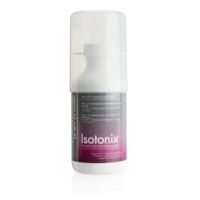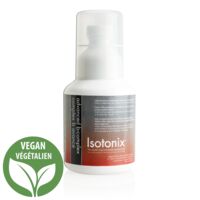Discover a new you with a healthy lifestyle change
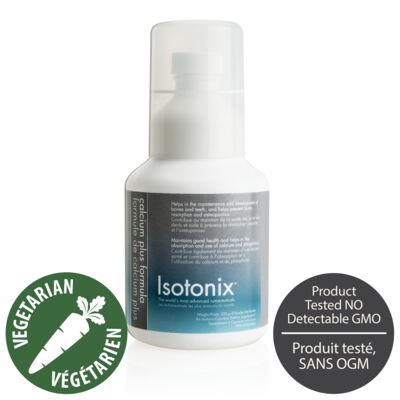
Isotonix® Calcium Plus
sku C13020
$34.96 CAD
$0.70 CAD Cashback
This product qualifies for free or reduced cost shipping. Learn More
Primary Benefits of Isotonix® Calcium Plus
An optimal blend of calcium.
- Helps in development and maintenance of bones and teeth
- Helps in the absorption and use of calcium and phosphorous
- Helps to prevent bone resorption and osteoporosis
- Maintains good health
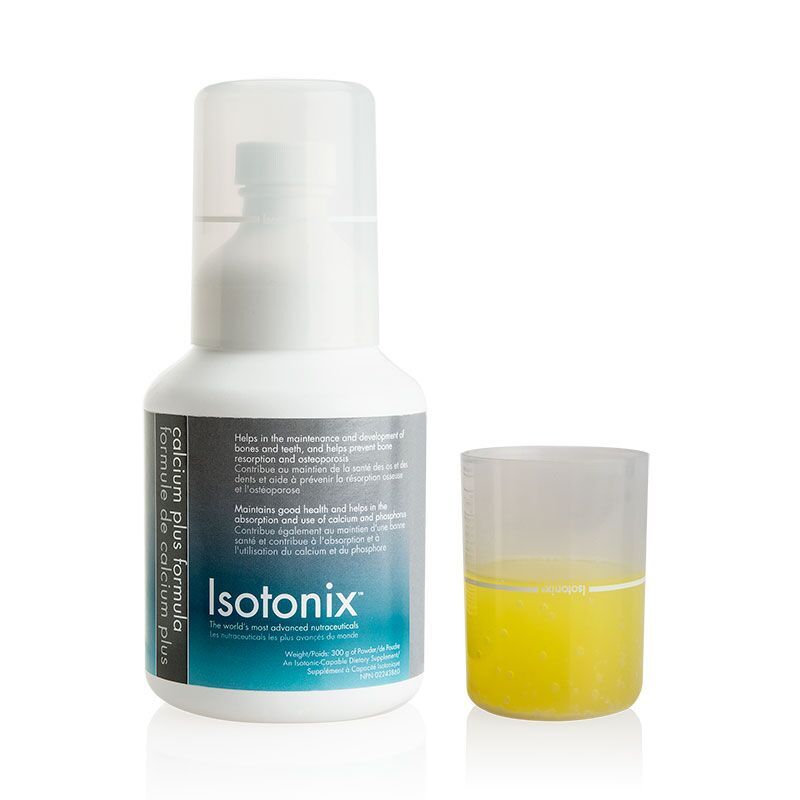
Strengthen Your Frame
What Makes Isotonix Calcium Plus Unique?
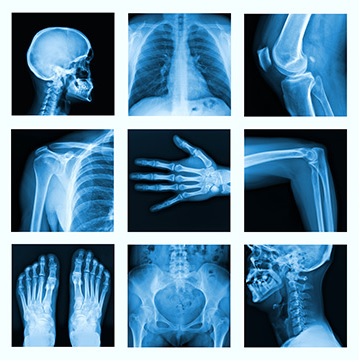
Calcium is essential for building and maintaining strong bones. Isotonix® Calcium Plus provides the body with an optimal blend of calcium, vitamin D3, magnesium, and vitamin C in an efficient isotonic solution that is readily absorbed by the body. Isotonix Calcium Plus paves the way for powerful results since it is in an isotonic form rather than a tablet. Calcium in tablet form is difficult for your body to absorb. People may fail to absorb tablet calcium supplements because the calcium supplement is not blended with vitamin D and magnesium; these are necessary to aid in the absorption and use of calcium. Even if the calcium tablet is blended correctly, it may be difficult for the body to utilize or break down the calcium. One explanation may be that many calcium brands use calcium from eggshell or oyster shell. These may not be well absorbed by the body. Another reason calcium may not be absorbed from a tablet is because of DCP, which is a binding agent used to hold the tablet together. DCP does not break down in the body.
Even assuming no binders are used in the calcium tablet, the body must still break down a hard-pressed tablet into a usable form. If the tablet cannot be broken down sufficiently in the stomach, then the calcium will not be absorbed. If you can't break down the calcium, your body is robbed of the calcium needed to support bodily functions. Ordinary calcium tablets require stomach acid to dissolve their compounds, but Isotonix Calcium Plus has no need of stomach acids to be utilized. It delivers an efficient calcium solution that is more readily absorbed by the intestine. Its natural citrus flavor is preferable to the chalky taste of typical chewable calcium wafers or tablets. Many calcium supplements exist in the marketplace, but only Isotonix Calcium Plus delivers a potent package of calcium and complementary nutrients through an isotonic system of delivery. This translates into a lower cost overall when compared to calcium supplements in pill form by making more of the active ingredients available to the body. Don't be misled by ingredient amounts. What really counts is the amount of active ingredients that your body can ultimately use.
Product Classifications
Gluten-Free - The finished product contains no detectable gluten (<10ppm gluten)
No Detectable GMOs - The finished product contains no detectable genetically-modified organisms
Vegetarian - This product is vegetarian
Isotonic-Capable Drinkable Supplements - Easy-to-swallow supplements in liquid form are immediately available to the body for absorption
Quality Standards - GMP Operations and Standardised Ingredients
Checked For: Heavy Metals, Microbiological Contaminants, Allergens, Potency, Purity and Identity
Isotonix Delivery System
Isotonix - the World's Most Advanced Nutraceuticals
Isotonix dietary supplements are a replica of the body's own fluids, such as tears, plasma and breast milk. All fluids in the human body have a certain concentration, which is called the osmotic pressure. The body's common osmotic pressure, which is isotonic, allows a consistent maintenance of all body tissues. In order for a substance to be used in the body's metabolism, it must be changed to the isotonic state. The efficiency of absorption is also affected by the digestive system. All substances that are used in the stomach go through a degradation process (breakdown) before they can be passed through the opening from the stomach to the small intestine to allow absorption. The digestive process can cause substances to lose some nutritive value, and this whole process takes time! The secret of the isotonic process is probably now becoming clear! When an isotonic substance enters the body, it will be absorbed into the bloodstream rapidly. With isotonic fluids, little nutritive value is lost making the absorption of nutrients highly efficient. There is nothing artificial about it. An isotonic fluid is nature's own nutrient delivery system.

Key Ingredients
Calcium
Calcium is found in the highest concentrations in milk. Other foods rich in calcium include the vegetables collard greens, Chinese cabbage, mustard greens, broccoli and bok choy, as well as tofu and sardines with bones included. Calcium is an essential mineral with a wide range of biological roles. Sufficient daily calcium intake is necessary for maintaining optimal bone density and health. In bone, calcium accounts for approximately 40 percent of bone weight. The skeleton has a structural requisite and acts as a storehouse for calcium. When the body does not get enough calcium per day, it draws calcium from your bones. This may lead to osteoporosis. Osteoporosis is an age related thinning of the bones, which has been associated with a greater risk of broken hips and other bones. Stooped posture, which can occur with age, is caused by an accumulation of small fractures in the vertebrae. Apart from its importance in bones and teeth, calcium supports normal muscle contraction, nerve health, heart rhythms, blood coagulation, glandular secretion, energy production and immune system function.
Magnesium
Foods rich in magnesium include unpolished grains, nuts and green vegetables. Green leafy vegetables are potent sources of magnesium because of their chlorophyll content. Meats, starches and milk are less rich sources of magnesium. Refined and processed foods are generally quite low in magnesium. More than 34% of Canadians over the age of 19 have been found to consume magnesium in quantities below the estimated average requirement (EAR), with the prevalence of inadequate intakes rising to greater than 40% in half the adult age and sex groups. Some surveys report lower intakes, and some believe that the dietary intake for many may be inadequate. Magnesium is a component of the mineralized part of bone and is necessary for the metabolism of potassium and calcium in adults. It helps maintain normal levels of potassium, phosphorus, calcium, adrenaline and insulin. It is also important for the mobilization of calcium, transporting it inside the cell for further utilization thus making it helpful in preventing osteoporosis. It plays a key role in the functioning of muscle and nervous tissue. Magnesium is necessary for the synthesis of all proteins, nucleic acids, nucleotides, cyclic adenosine monophosphate, lipids and carbohydrates. Magnesium is required for energy release, regulation of the body temperature, proper nerve function, and metabolism regulation. Magnesium is required by your body to build healthy bones and teeth, and for proper muscle development. It works together with calcium and vitamin D to help keep bones strong and prevent osteoporosis.
Manganese
Manganese is a mineral found in large quantities in both plant and animal matter. The most valuable dietary sources of manganese include whole grains, nuts, leafy vegetables and teas. Manganese is concentrated in the bran of grains, which is removed during processing. Only trace amounts of this element can be found in human tissue. Manganese is predominantly stored in the bones, liver, kidney and pancreas. It aids in the formation of connective tissue, bones, blood-clotting factors and sex hormones, and plays a role in fat and carbohydrate metabolism, calcium absorption and blood sugar regulation. Manganese is also necessary for normal brain and nerve function. Manganese is a component of the antioxidant-enzyme manganese superoxide dismutase (MnSOD). Antioxidants scavenge damaging particles in the body known as free radicals. These particles occur naturally in the body but can damage cell membranes, interact with genetic material, and possibly contribute to the aging process as well as the development of a number of health conditions.
Vitamin B2
Liver, dairy products, dark green vegetables and some types of seafood are primary sources of riboflavin. Vitamin B2 serves as a co-enzyme, working with other B-vitamins. It assists healthy red blood cell formation, supports the nervous system, respiration, antibody production and regulating human growth. It is also necessary for healthy skin, nails, hair growth and general good health including regulating thyroid activity. Vitamin B2 plays a crucial role in turning food into energy as a part of the electron transport chain, driving cellular energy on the micro-level. Riboflavin can be useful for pregnant or lactating women as well as athletes due to their higher caloric needs. Vitamin B2 helps the breakdown of fats while functioning as a cofactor or helper in activating B-6 and folic acid. Vitamin B2 is a water-soluble vitamin, one that cannot be stored by the body except in insignificant amounts. It must be replenished daily.
Vitamin C
The best food sources of vitamin C include all citrus fruits (oranges, grapefruit, lemons, tangerines) as well as other fruits and vegetables such as strawberries, tomatoes, broccoli, brussels sprouts, peppers and cantaloupe. Vitamin C is a rather "fragile" vitamin and can be easily destroyed by cooking or exposure of food to oxygen. Vitamin C promotes a vitamin "sparing" effect, allowing your body to better utilize multiple vitamins and minerals such as thiamin, riboflavin, pantothenic acid, biotin, folic acid, B12, retinaldehyde and alpha-tocopherol and in this case, the mineral calcium. It is also a cofactor or helper in the metabolism of folic acid, some amino acids and hormones., improving iron absorption from the small intestine. Vitamin C helps to regenerate active vitamin E in cell membranes, improves the absorption of iron from the small intestine, and supports the synthesis of collagen. Vitamin C has become the world's most popular vitamin. One reason is its ability to support the immune system. The most convincing evidence suggesting the need for vitamin C supplementation is based on the fact that humans are incapable of producing vitamin C in their bodies. Stress, some drugs and smoking can impair the body's ability to absorb vitamin C. As it is a water-soluble soluble vitamin, vitamin C is flushed from the body each day. Humans do not always eat foods containing an adequate amount of vitamin C and so it often beneficial to take a supplement.
Vitamin D3
Regular sunlight exposure is the main way that most humans get their vitamin D. Food sources of vitamin D include vitamin D-fortified milk (2.5 mcg per cup), cod liver oil and fatty fish such as salmon. Small amounts of vitamin D3 can also be found in egg yolks and liver. Vitamin D promotes the absorption of calcium and phosphorus, and supports the production of several proteins involved in calcium absorption and storage. Vitamin D works with calcium to promote strong, hard bones. It supports normal transport of calcium out of the osteoblasts into the extra-cellular fluid and in the kidneys. It also promotes normal calcium and phosphate re-uptake through the renal tubules and intestinal epithelium. It supports normal skin cell growth and promotes normal production of insulin by the pancreas.
Potassium
Foods rich in potassium include fresh vegetables and fruits such as bananas, oranges, cantaloupe, avocado, raw spinach, cabbage and celery. Potassium is an essential macromineral that helps to keep fluid balance. It also plays a role in a wide variety of biochemical and physiological processes. Among other things, it promotes the transmission of nerve impulses, the contraction of cardiac, skeletal and smooth muscle, the production of energy, the synthesis of nucleic acids and the maintenance of normal blood pressure. Potassium promotes muscle relaxation, and supports normal insulin release. It also promotes normal glycogen and protein synthesis. Potassium is an electrolyte that promotes proper heartbeat, and it is important in supporting the normal release of energy from protein, fat and carbohydrates during metabolism. Potassium also promotes the normal regulation of water balance. Potassium promotes the normal elimination of wastes and generally contributes to a sense of well-being. Potassium is stored in the muscles.
FAQs
- Why should I take calcium?
Practically no one ingests enough calcium in their daily diet, so calcium is one of the nutrients that is highly recommended in terms of supplementation. Besides being helpful in supporting and maintaining bone integrity, calcium serves a dynamic role as a mineral. It is very important in the activity of many bodily enzymes. It is important for athletes in maintaining proper fluid balance as well as aiding in the action of skeletal and muscle contraction. In addition, calcium may be helpful in preventing the incidence of colon cancer. Canadians are being urged to increase their intake of fresh fruits and vegetables to get the required minerals, however for those who do not typically have the best diets it is important to make sure that one is getting enough of this crucial mineral. - How much calcium should I take?
The National Academy of Sciences has established guidelines for calcium that are 25 to 50 percent higher than previous recommendations. For ages 20 to 50, calcium consumption is recommended to be at least 1,000 mg daily; for adults over age 51, the recommendation is 1,200 mg daily. The most common supplemental amount for adults is 800 to 1,000 mg per day. Some physicians recommend 1,000 milligrams of supplement calcium daily for postmenopausal women taking estrogen replacement therapy (ERT) and 1,500 milligrams daily for postmenopausal women not taking ERT. An intake of 1,200 milligrams daily appears to be adequate for both groups. - I am not an elderly woman. Why should I supplement with calcium?
Calcium plays a huge role in many major regulatory bodily processes with implications that extend far beyond the age factor. Other than elderly women who may be susceptible to bone loss, younger women, pregnant and lactating women, growing children and those with high blood pressure are suitable candidates for calcium supplementation. Younger women need more calcium to build up the strength of their bones around the ages of 20 and up. It is safe to say that an ounce of prevention is worth a pound of cure. Pregnant and lactating women need extra calcium, at least 1200 mg /day to foster the healthy growth of new cells and of breast milk. Finally, those with high blood pressure have been found to have low levels of calcium intake and further studies have confirmed the positive impact of calcium supplementation on heart health. Of course, calcium has been most widely touted as a preventative of osteoporosis. Because many people are uneducated about the far-reaching necessity and benefit of calcium, the drive to add a supplement to one's diet is floundering. Further, it has been found that many younger and middle-aged women who should be ingesting greater amounts of calcium in both diet and supplementation, are the ones who actually ingest the least. The mindset that milk products are fattening has contributed to a lack of quality calcium intake. Women in general who have a vested interest in their health should make moves to begin calcium supplementation.
Moreover, suppose you are predisposed to osteoporosis and are even feeling a few of the signs of it, including headache and a decrease in height; while calcium supplementation is one of the key ingredients to preventing and even fighting ongoing osteoporosis, there are a few other important factors that must be taken into account. Many other things can also play a role in causing osteoporosis. Some of these are seemingly normal lifestyle factors including smoking, lack of exercise, low levels of magnesium, zinc, vitamin B6, vitamin K, and B12, a high alcohol intake and altered vitamin D metabolism. To fight and/or prevent osteoporosis requires a focus of your attention on these aforementioned variables as well as steadily supplementing your diet with a quality calcium supplement such as Isotonix Calcium formula. So, in turn, if you know that you are inherently averse to working out or that you like the occasional smoke after work, your need for a good calcium supplement increases tremendously regardless of age.
Science
- Allender PS, Cutler JA, Follman D, et al. Dietary calcium and blood pressure: meta—analysis of randomized clinical trials. Ann Intern Med. 1996; 124:825-831.
- Altura BM, Altura BT. Role of magnesium and calcium in alcohol-induced hypertension and strokes as probed by in vivo television microscopy, digital image microscopy, optical spectroscopy, 31P-NMR, spectroscopy and a unique magnesium ion-selective electrode. Alcohol Clin Exp Res. 1994; 18:1057-1068.
- Baly DL, Schneiderman JS, Garcia-Welsh AL. Effect of manganese deficiency on insulin binding, glucose transport and metabolism in rat adipocytes. J Nutr. 1990; 120:1075-1079.
- Baron JA, Beach M, Mandel JS, et al. Calcium supplements for the prevention of colorectal adenomas. N Engl J Med 1999;340:101-107.
- Baron JA, Tosteson TD, Wargovich MJ, et al. Calcium supplementation and rectal mucosal proliferation: a randomized controlled trial. J Natl Cancer Inst 1995;87:1303-1307.
- Baxter GF, Sumeray MS, Walker JM. Infant size and magnesium: insights into LIMIT-2 and ISIS-4 from experimental studies. Lancet. 1996; 348:1424-1426.
- Beattie JH, Peace HS. The influence of a low-boron diet and boron supplementation on bone, major mineral and sex steroid metabolism in postmenopausal women. Br J Nutr. 1993 May;69(3):871-84.
- Bell L, Halstenson CE, Halstenson CJ, et al. Cholesterol-lowering effects of calcium carbonate in patients with mild to moderate hypercholesterolemia. Arch Intern Med. 1992; 152:2441-2444.
- Bostick RM, Kushi LH, Wu Y, et al. Relation of calcium, vitamin D, and dairy food intake to ischemic heart disease mortality among postmenopausal women. Am J Epidemiol 1999;149:151-160.
- Britton J, Pavord I, Richards K, et al. Dietary magnesium, lung function, wheezing, and airway hyper-reactivity in a random adult population sample. Lancet. 1994; 344:357-362.
- Buckley LM, Leib ES, Cartularo KS, et al. Calcium and vitamin D3 supplementation prevents bone loss in the spine secondary to low-dose corticosteroids in patients with rheumatoid arthritis. Ann Intern Med. 1996; 125:961-968.
- Casscells W. Magnesium and myocardial infarction. Lancet. 1994; 343:807-809.
- Christiansen CW, Rieder MA, Silverstein EL, Gencheff NE. Magnesium sulfate reduces myocardial infarct size when administered before but not after coronary reperfusion in a canine model. Circulation. 1995; 92:2617-2621.
- Christin Marandino, Vegetarian Times, August 1998
- Curhan GC, Willett WC, Speizer FE, et al. Comparison of dietary calcium with supplemental calcium and other nutrients as factors affecting the risk of kidney stones in women. Ann Intern Med. 1997; 126:497-504.
- Dawson-Hughes B, Harris SS, Krall EA, Dallal GE. Effect of calcium and vitamin D supplementation on bone density on men and women 65 years of age and older. N Engl J Med. 1997; 337:670-676.
- de Lourdes Lima M, Cruz T, Carreiro Pousada J, et al. The effect of magnesium supplementation in increasing doses on the control of type 2 diabetes. Diabetes Care. 1998; 21:682-686.
- Dietary Reference Intakes for Calcium, Phosphorous, Magnesium, Vitamin D, and Fluoride. Washington, DC: National Academy Press; 1997.
- Durlach J, Durlach V, Bac P, et al. Magnesium and therapeutics. Magnes Res. 1994; 7:313-328.
- Elisaf M, Merkouropoulos M, Tsianos EV. Siamopoulos KC. Pathogenetic mechanisms of hypomagnesemia in alcoholic patients. J Trace Elem Med Biol. 1995; 9:210-214.
- Facchinetti F, Borella P, Sances G, et al. Oral magnesium successfully relieves premenstrual mood changes. Obstet Gynecol. 1991; 78:177-181.
- Garland CF, Garland FC, Gorham ED. Calcium and vitamin D. Their potential roles in colon and breast cancer prevention. Ann NY Acad Sci. 1999; 889:107-119.
- Gong H, Amemiya T. Optic nerve changes in manganese-deficient rats. Exp Eye Res. 1999; 68:313-320.
- Gullestad L, Dolva LO, Soyland E, et al. Oral magnesium supplementation improves metabolic variables and muscle strength in alcoholics. Alcohol Clin Exp Res. 1992; 16:986-990.
- Health & Medicine. (Statistical Data Included) American Fitness, July, 1999 Tannen RL. Effects of potassium on blood pressure control. Ann Intern Med. 1983; 98(part 2):773-780.
- Heaney RP. Calcium, dairy products and osteoporosis. J Am Coll Nutr. 2000; 19(2 Suppl):83S-99S.
- Hussain S, Ali SF. Manganese scavenges superoxide and hydroxyl radicals: an in vitro study in rats. Neuroscience Letters. 1999; 261:21-24.
- ISIS-4 (Fourth International Study of Infarct Survival) Collaborative Group. ISIS-4: a randomised factorial trial assessing early oral captopril, oral mononitrate, and intravenous magnesium sulfate in 58,050 patients with suspected acute myocardial infarction. Lancet. 1995; 345:669-685.
- Jorde R, Sundsfjord J, Haug E, et al. Relation between low calcium intake, parathyroid hormone, and blood pressure. Hypertension 2000;35:1154-1159.
- Kao WHL, Folsom AR, Nieto J, et al. Serum and dietary magnesium and the risk for type 2 diabetes mellitus (editorial). Arch. Int Med. 1999; 159:2151-2159.
- Keen CL, Ensunsa JL, Watson MH, et al. Nutritional aspects of manganese from experimental studies. Neurotoxicol. 1999; 20:213-223.
- Krieger D, Krieger S, Jansen O, et al. Manganese and chronic hepatic encephalopathy. Lancet. 1995; 346:270-274.
- Lim R, Herzog WR. Magnesium for cardiac patients: is it a valuable treatment supplement? Contemp Int Med. 1998; 10:6-9.
- Lipkin M, Newmark H. Effect of added dietary calcium on colonic epithelial-cell proliferation in subjects at high risk for familial colonic cancer. N Engl J Med. 1985; 313:1381-1384.
- Lucas MJ, Leveno KJ, Cunningham FG. A comparison of magnesium sulfate with phenytoin for the prevention of eclampsia. N Engl J Med. 1995; 333:201-205.
- Martini LA. Magnesium supplementation and bone turnover. Nutr Rev. 1999; 57:227-229.
- Mauskop A, Altura BM. Role of magnesium in the pathogenesis and treatment of migraines. Clin Neurosci. 1998; 5:24-27.
- Naghii MR, Wall PM, Samman S. The boron content of selected foods and the estimation of its daily intake among free-living subjects. J Am Coll Nutr. 1996 Dec;15(6):614-9.
- Newnham RE. Essentiality of boron for healthy bones and joints. Environ Health Perspect. 1994;102:83-85
- Nielsen FH. Studies on the relationship between boron and magnesium which possibly affects the formation and maintenance of bones. Magnes Trace Elem. 1990;9:61-69
- Nielsen FH. Ultratrace minerals. In: Shils ME, Olson JA, Shike M, Ross AC, eds. Modern Nutrition in Health and Disease, 9th ed. Baltimore, MD: Williams and Wilkins; 1999:283-303.
- Oginni LM, Sharp CA, Worsfold M, et al. Healing of rickets after calcium supplementation. Lancet. 1999; 353:296-297.
- Orchard TJ. Magnesium and type 2 diabetes mellitus (editorial). Arch Int Med. 1999; 159:2119-2120.
- Paolisso G, Sgamabato S, Pizza G, et al. Improved insulin response and action by chronic magnesium administration in aged NIDDM. Diabetes Care. 1989; 12:265-269.
- Peikert A, Wilimzig C, Kohne-Volland R. Prophylaxis of migraine with oral magnesium: results from a prospective, multi-center, placebo-controlled and double-blind randomized study. Cephalalgia. 1996; 16:257-263.
- Penland J.G. The importance of boron nutrition for brain and psychological function. Biol Trace Elem Res. 1998; 66:299-317.
- Recker RR. Calcium absorption and achlorhydria. N Engl J Med. 1985; 313:70-73. Reid IR, Ames RW, Evans MC, et al. Effect of calcium supplementation on bone loss in postmenopausal women. N Engl J Med. 1993; 328:460-464.
- Rivlin RS. Magnesium deficiency and alcohol intake: mechanisms, clinical significance and possible relation to cancer development (a review). J Am Coll Nutr. 1994; 13:416-423.
- Roberts JM. Magnesium for preeclampsia and eclampsia. N Engl J Med. 1995; 333:250-251.
- Roffe C, Fletcher S, Woods KL. Investigation of the effects of intravenous magnesium sulphate on cardiac rhythm in acute myocardial infarction. Br Heart J. 1994; 71:141-145.
- Saris N-EL, Mervaala E, Karppanen H, et al. Magnesium. An update on physiological, clinical and analytical aspects (review). Clinica Chimica Acta. 2000; 294:1-26.
- Shils ME. Magnesium. In: Shils M, Olson JA, Shike M, Ross AC, eds. Modern Nutrition in Health and Disease. 9th ed. Baltimore, MD: Williams and Wilkins; 1999:169-192.
- Singh MA. Combined exercise and dietary intervention to optimize body composition in aging. Ann N Y Acad Sci. 1998 Nov 20;854:378-93.
- Singh N, Singh PN, Hershman JM. Effect of calcium carbonate on the absorption of levothyroxine. JAMA. 2000; 283:2822-2825.
- Sojka JE. Magnesium supplementation and osteoporosis. Nutr Rev. 1995; 53:71-80.
- Strause L, Saltman P, Glowacki J. The effect of deficiencies of manganese and copper on osteo-induction and on resorption of bone particles in rats. Calcif Tissue Int. 1987; 41:145-150
- Strause L, Saltman P, Smith KT, et al. Spinal bone loss in postmenopausal women supplemented with calcium and trace minerals. J Nutr. 1994; 124:1060-1064.
- Sutherland B, Strong P, King JC. Determining human dietary requirements for boron. Biol Trace Elem Res. 1998 Winter;66(1-3):193-204.
- Talbot JR, Guardo P, Seccia S, et al. Calcium bioavailability and parathyroid hormone acute changes after oral intake of dairy and nondairy products in healthy volunteers. Osteoporosis Int. 1999; 10:137-142.
- Tobian L. Salt and hypertension. Lessons from animal models that relate to human hypertension. Hypertension. 1991; 17:152-158.
- Tosiello L. Hypomagnesemia and diabetes mellitus. A review of clinical implications. Arch Intern Med. 1998; 156:1143-1148.
- Volpe SL, Taper LJ, Meacham S. The relationship between boron and magnesium status and bone mineral density in the human: a review. Magnes Res. 1993;6:291-296
- Wargovich MJ, Eng VWS, Newmark HL. Calcium inhibits the damaging and compensatory proliferative effects of fatty acids on mouse colon epithelium. Cancer Lett. 1984; 23:253-258.
- Weaver CM, Heaney RP. Calcium. In: Shils ME, Olson JA, Shike M, Ross AC, eds. Modern Nutrition in Health and Disease. 9th ed. Baltimore, MD: Williams and Wilkins; 1999:141-155.
- Wolf RL, Cauley JA, Baker CE, et al. Factors associated with calcium absorption efficiency in pre- and perimenopausal women. Am J Clin Nutr. 2000; 72:466-471.
- Woods KL, Fletcher S. Long-term outcome after intravenous magnesium sulphate in suspected acute myocardial infarction: the second Leicester Intravenous Magnesium Intervention Trial (LIMIT-2). Lancet. 1994; 343:816-819.
- Zemel MB, Shi H, Greer B, et al. Regulation of adiposity by dietary calcium. FASEB J. 2000; 14:1132-1138.
Reviews
Displaying 1 - 5 of 84
03/04/2024
by JackieR
Excellent.
Taking this powder form of supplement definitely is more beneficial for me. I feel a positive difference with taking this product.
Response from Customer Service
03/04/2024
Dear Valued Customer,
We're so glad to hear about your positive experience the nutraMetrix Isotonix® Calcium Complete! It's wonderful to know that you feel a difference since incorporating it into your routine. We value your feedback and are delighted to be able to provide products that you find beneficial. If you have any questions or need further assistance, feel free to reach out to us anytime.
Thank you again,
The Product Information Team.
09/30/2023
by Lieu
Tasty Calcium
Love the lemony taste!
ML
08/22/2023
by Anonymous
Product review
Good taste, and easy to take.
Response from Customer Service
08/23/2023
Dear Valued Customer,
Thanks so much for the great review! We're thrilled to hear that our product is tasty and easy to take. We can assure you that the quality of our product is always a top priority. We hope you continue to enjoy it - thank you for your continued loyalty!
The Product Information Team
07/14/2023
by Anonymous
5 Star Supplement
5 Stars!! Very High Quality!
Response from Customer Service
07/14/2023
Dear Valued Customer,
Thank you for taking the time to leave your thoughts on the Isotonix™ Calcium Plus. We are happy to hear you are pleased with the product.
Thank you.
UnFranchise Services Department
05/13/2023
by KEAT GEORKC
drinkable calcium
my mum hard to swallow calcium pill but this drinkable calcium is the great way for her calcium absorption
Response from Customer Service
05/14/2023
Dear Valued Customer,
Thank you for taking the time to leave your thoughts on the Isotonix™ Calcium Plus. We are happy to hear you are pleased with the product.
Thank you.
UnFranchise Services Department
- Prev
- Next


